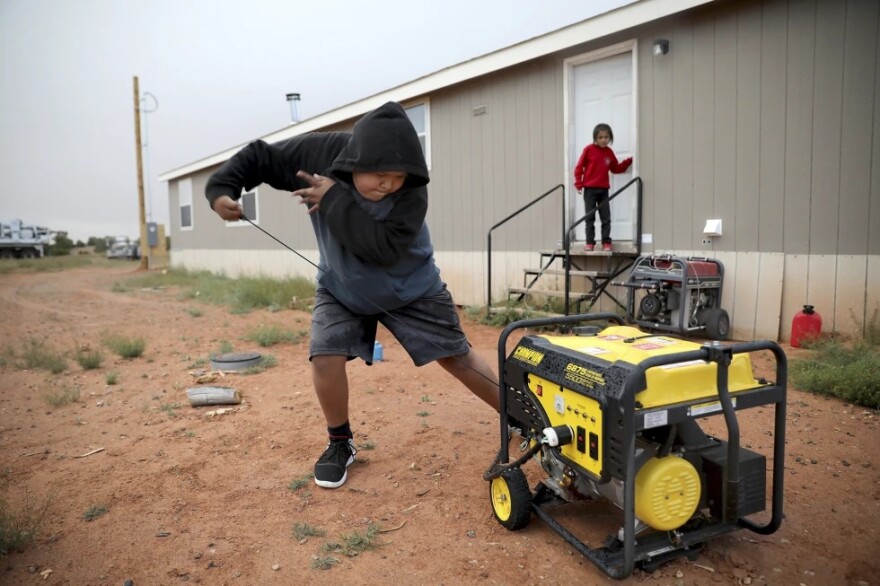ALBUQUERQUE, N.M. (AP) — The U.S. Interior Department on Tuesday unveiled a new program to bring electricity to more homes in Native American communities as the Biden administration looks to funnel more money toward climate and renewable energy projects.
The program will be funded by an initial $72.5 million. In all, federal officials said $150 million is being invested from the Inflation Reduction Act to support the electrification of homes in tribal communities, many of which have seen mixed success over the decades as officials have tried to address the lack of adequate infrastructure in remote areas.
In 2022, the U.S. Energy Department’s Office of Indian Energy issued a report citing that nearly 17,000 tribal homes were without electricity, with most being in southwestern states and in Alaska. Assistant Secretary for Indian Affairs Bryan Newland testified before Congress earlier this year that 1 in 5 homes on the Navajo Nation and more than one-third of homes on the neighboring Hopi reservation are without electricity.
Newland described Tuesday’s announcement as a historic investment to fund long-overdue needs in tribal communities.
“It will have a fundamental and significant impact on businesses, communities and families,” he said in a statement.
Tribes will have to apply for the funding — and federal officials will choose projects based on need, readiness, risks of climate change impacts, new job opportunities and other factors.
The program will provide financial and technical assistance to tribes to connect homes to transmission and distribution that is powered by renewable energy. Funding can also be used to transition electrified homes in tribal communities to zero-emissions energy systems and to cover the costs of repairs, as well as retrofitting that is necessary to install the new systems.
Newland had previously estimated that it will cost roughly $70,000 per home to deliver electricity to areas that are not already on or immediately near a power grid, or wired for electricity.
Energy experts have said that the work could require developing micro-grids or installing solar panels so residents can power refrigerators, and charge up cellphones and laptops. The Energy Department earlier this year said it would tap tribal colleges and universities to help build out an renewable energy economy in Indian Country that could support the work.
The Interior Department consulted with tribes late last year as officials developed the new program. The plan is to award the funding during two rounds by the end of 2024.

